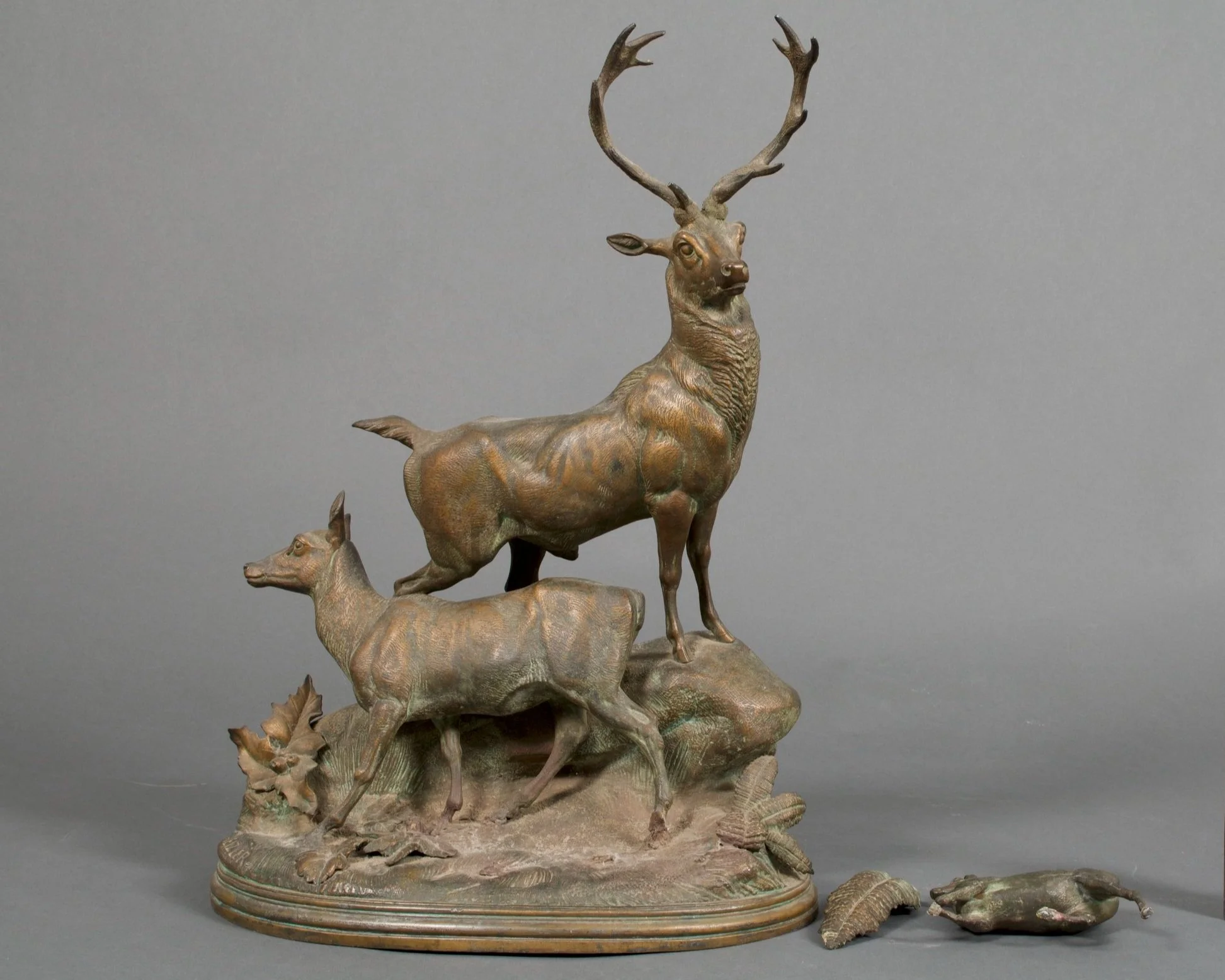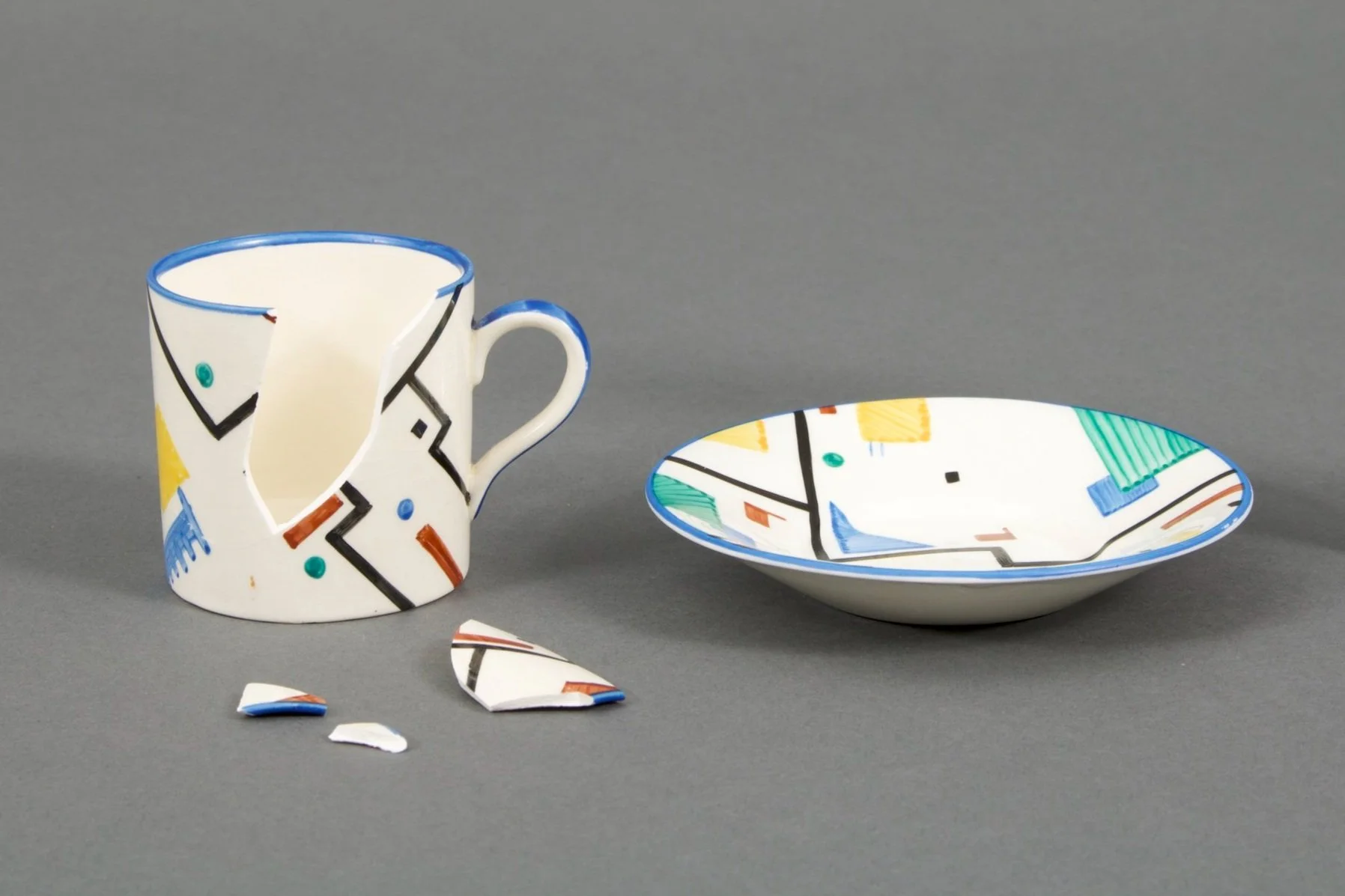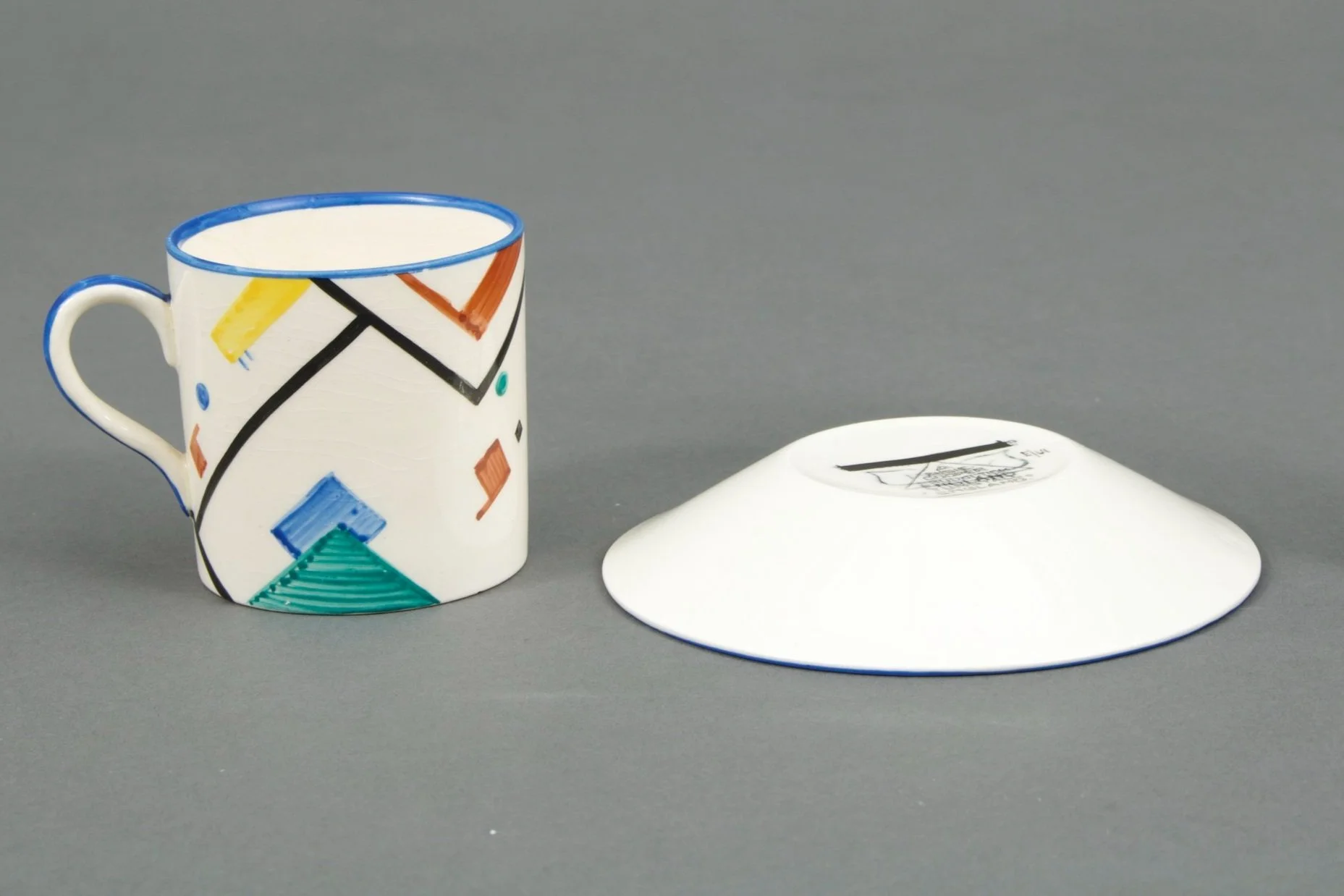
Midwest Art Conservation Center
Summer 2021
A 10-week internship was completed under the supervision of Megan Emery and Courtney Murray. MACC is a non-profit regional center and as such conservation treatments conducted over the course of a summer were from museums in the area, private clients as well as private and public site-specific artworks. In addition to the projects described below, treatments completed over the summer included: an ivory elephant and lion, a William Morris designed settle, and outdoor sculpture projects at the Minnesota Landscape Arboretum, the Caponi Art Park and public sculptures for the City of Minneapolis.
Image of Megan Emery (left) and Lorna Brundrett (right). Image courtesy of Courtney Murray.
Otoe Turban
Before Treatment
Otoe Tribe. 5 1/4” × 9 × 9 3/4”
The Otoe people call themselves Jiwere (jee-weh-ray) and are the original the caretakers of the land around where Nebraska and Iowa meet. This turban is made from otter fur that is on the outside and lines the inside of the turban, glass seed beads can be seen on top rim of the turban, the front medallion and the front diagonal beaded band, red trade wool that you can see on the inside of the top rim, black wool on the top outside rim, yellow silk ribbon also on the outside top rim and bison horn. I was initially cautious about the use of the word “turban” not knowing if that had been designated by a museum. Yet, after referring to similar objects in the Eiteljorg Museum’s collection and at the National Museum for the American Indian it felt appropriate to use the term. The turban was analyzed early on for the presence of heavy metals using a handheld XRF; the results were lead and mercury and trace amounts of arsenic. This informed a safe handling protocol and safe use of materials to reduce the transfer of the heavy metals during the treatment, this included working in the fume hood whenever possible. Both a scale cast of one of the guard hairs and a mounted guard hair from the pelt were observed using PLM, and I support the identification of the pelt being that of river otter. The guard hair is a long, course hair forming an animal’s outer fur.
After Treatment
The fur was dry surface cleaned and the beadwork was cleaned using an ethanol and water solution. The primary goals of the treatment were to secure the beaded medallion and to reduce the creases in the front and back of the turban that were estimated to have formed during storage. To reduce the crease a humidity chamber was constructed. The solubility of the dyes in the red, black and yellow fabric were tested prior to humidification.
Hygrometers were calibrated using a wet sock psychrometer. Humidity was increased over 36 hrs using an ethanol and water solution. The turban was removed from the chamber along with the source of the humidity. The supports had already been prepared so that I could quickly add them around the turban and put it back into the chamber to slowly decrease in humidity over 2 days. Though this helped, evidence of creasing was still visible so a locally applied a gortex humidification sandwich to the front crease and to an area of frayed yellow ribbon. This was successful. I then used nylon netting to reduce the chance of the frayed ribbon from fraying further and I secured the beaded medallion using skala thread.
Deer Family
This sculpture was initially believed to be a bronze cast, due to its tone, weight and the knowledge that the artist, Hippolyte Heizler, worked primarily with bronze casts. White corrosion bursts on the underside of the sculpture, a silver-toned base metal, and handheld XRF results were consistent with the sculpture being a lead-alloy cast. Previous repair techniques were visible on the buck, doe and the fawn using epoxy, silver/gray-toned epoxy putty and solder. These techniques were distracting and in some cases failing to secure the deer. The removal of the repair materials exposed losses in the original casting.
The treatment of this sculpture began with imaging and writing a treatment proposal. The entire object was then dry cleaned used brushes, a HEPA-filtered vacuum and polyurethane cosmetic sponges. Red/brown overpaint was reduced from under the doe using 7% benzyl alcohol in acetone (v:v). This solution was then used over all to reduce an oily reside. Removed prior repair techniques where they excessive and distracting or had failed. This was completed using benzyl alcohol and acetone solution poulticed for a 5-10 minutes in combination with mechanical means (metal files and pliers). Cleaned areas of loss using acetone. 20% B-48N (w:v) was used as a barrier layer and as the adhesive to attached sculpted replacement parts using Apoxie Sculpt. The Apoxie Sculpt was then toned using Golden Fluid Acrylics. Bowling alley wax (non-pigmented) was applied to all sides of the sculpture.
Before Treatment
Hippolyte Heizler. 22 x 15 1/2 x 9 1/2.”
After Treatment
Coffee Cup
This coffee cup had a large break and three accompanying fragments. One of the cracks sprung the ceramic out of alignment. This crack exhibited two small chip losses and several additional losses.
Before Treatment
Earthenware coffee cup, designed by Susie Cooper.
After Treatment
Treatment of this ceramic included an overall surface cleaning using ethanol and water in a 1:1 solution. Adhesive residues and tough surface grime were then removed with acetone. An initial coat of 5% B-72 (w:v) in acetone was applied to areas of exposed ceramic body. A 20% B-72 solution in xylene was then used to realign the sprung crack as best as possible to reduce the step. Ceramic fragments could then be adhered into place using a 25% B-72 solution in acetone.
Flügger was applied to small losses along the crack and inpainted with Golden Acrylics. A top coat of Golden Porcelain Restoration Glaze (gloss) was used to create a similar gloss level to the glaze. For the largest loss, near the top edge (see images to the right) Flügger was mixed with pure pigments and then applied and allowed to dry. Acrysol WS-24 was then brushed on top, allowed to dry. The final step to match the gloss of the ceramic was to burnish the Acrysol using a bone folder over a sheet of Mylar.
Before Treatment Detail
After Treatment Detail





